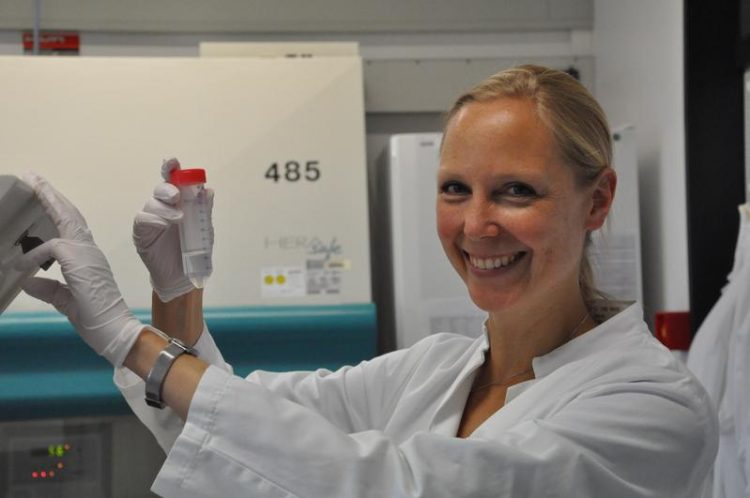Protein complex for hepatitis C-virusentry in liver cells is characterised

Dr. Gisa Gerold TWINCORE
The receptors, which viruses –and other extracellular moieties- use to enter cells, are often part of large complexes composed of many proteins. In the case of hepatitis C virus a critical receptor is CD81. It is part of a complex -the tetraspanin web-, which is embedded in the liver cell membrane.
The complex binds the virus on the surface of liver cells. Its composition was now elucidated by the team of Gisa Gerold. Moreover, she and her co-workers could show how the virus is high jacking the complex to gain access into liver cells.
“The protein complex deserves the name ‘complex’ as it comprises a fairly large number of proteins. It furthermore engages additional cytosolic proteins.”, says Gisa Gerold. “To understand, how virus entry works, it is not enough to look at CD81 in an isolated manner. We need to take into account, which other molecules are engaged by CD81.”
And exactly that is what the method of the biochemist can do.The work revealed that the CD81 complex in liver cells consists of more than 33 proteins. Using quantitative mass spectrometry – a method, which elucidates the nature of proteins in the complex and their relative abundance – she analyzed the molecular environment of the hepatitis C virus entry receptor CD81.
For 30 of the 33 interacting proteins it was unclear, whether they played a role in hepatitis C virus infection. By testing every single one of the 33 proteins for their role in infection, the researchers found two novel proteins, which are important for virus entry: calpain-5 (CAPN5) and Casitas B-lineage lymphoma proto-oncogene B (CBLB).
„The functional role of CAPN5 and CBLB in hepatitis C virus entry into liver cells was previously unknown. We could thus not only map proteins within the CD81 complex, but also elucidate two novel key components of the complex that contribute to virus infection”, concludes Gisa Gerold.
Dr. Gisa Gerold, gisa.gerold(at)twincore.de
Tel: +49 (0)511 220027-134
Bruening J, Banse P, Kahl S, Vondran FW, Kaderali L, Marinach C, Silvie O, Pietschmann T, Meissner F*, Gerold G*. (2018) Hepatitis C virus enters liver cells using the CD81 receptor complex proteins calpain-5 and CBLB. PLOS Pathogens. * these authors contributed equally
https://www.twincore.de/en/institutes/experimental-virology/rg-virus-interaction… More about Gisa Gerold's research.
Media Contact
All latest news from the category: Life Sciences and Chemistry
Articles and reports from the Life Sciences and chemistry area deal with applied and basic research into modern biology, chemistry and human medicine.
Valuable information can be found on a range of life sciences fields including bacteriology, biochemistry, bionics, bioinformatics, biophysics, biotechnology, genetics, geobotany, human biology, marine biology, microbiology, molecular biology, cellular biology, zoology, bioinorganic chemistry, microchemistry and environmental chemistry.
Newest articles

NASA: Mystery of life’s handedness deepens
The mystery of why life uses molecules with specific orientations has deepened with a NASA-funded discovery that RNA — a key molecule thought to have potentially held the instructions for…

What are the effects of historic lithium mining on water quality?
Study reveals low levels of common contaminants but high levels of other elements in waters associated with an abandoned lithium mine. Lithium ore and mining waste from a historic lithium…

Quantum-inspired design boosts efficiency of heat-to-electricity conversion
Rice engineers take unconventional route to improving thermophotovoltaic systems. Researchers at Rice University have found a new way to improve a key element of thermophotovoltaic (TPV) systems, which convert heat…



